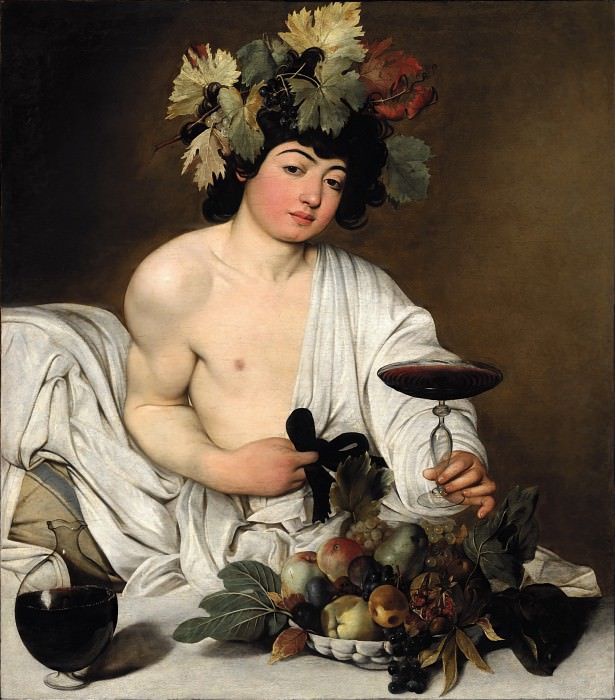Bacchus Michelangelo Merisi da Caravaggio (1571-1610)
Michelangelo Merisi da Caravaggio – Bacchus
Edit attribution
Download full size: 6236×7098 px (12,5 Mb)
Painter: Michelangelo Merisi da Caravaggio
Michelangelo Merisi da Caravaggio, the Italian painter who was one of the first to work in the Baroque painting style, painted "Bacchus" during a rather quiet and serene period of his life. This may be inferred from the fact that Caravaggio painted this character earlier, but not as a full of vigor, but as a sick and somewhat shabby-looking man with a weary face. The painting is a portrait of a young man in the image of the Greek god Bacchus.
Description of Michelangelo Merisi da Caravaggio’s Bacchus (Bacchus)
Michelangelo Merisi da Caravaggio, the Italian painter who was one of the first to work in the Baroque painting style, painted "Bacchus" during a rather quiet and serene period of his life. This may be inferred from the fact that Caravaggio painted this character earlier, but not as a full of vigor, but as a sick and somewhat shabby-looking man with a weary face.
The painting is a portrait of a young man in the image of the Greek god Bacchus. He is dressed, or rather half-dressed, in white clothes, girt with a black sash, the end of which Bacchus holds in his right hand. With his left hand he holds out a wide glass full of wine, as if inviting the spectator to partake in the feast. On the table in front of the deity is a bowl of fruit and a chubby bottle of wine.
Bacchus is healthy and muscular, his cheeks glowing with the blush of a healthy, unencumbered man. But his face is puffy and somewhat effeminate, and his eyes show nothing but a half-drunken languor that no one knows whether it will end in a fight with mythical drinking companions or in sleep among the canteen utensils. The young man’s black tarred hair looks artificial, which may be true - there are references to the artist’s use of wigs.
Bacchus sits on a white bedspread, but it does not obscure the long-unwashed striped cushion, a symbol of a kind of uncleanness. The young man’s hand, holding the glass, has apparently not been washed for a long time, and dirt has accumulated under his fingernails - it looks more like the hand of some ragamuffin than the hand of an ancient deity.
The fruit on the table was mostly just for throwing away-they were crumpled, bitten, and some were rotten and caterpillar-stricken. The pomegranate among them, having lost its marketable appearance, is a symbol of the loss of purity and innocence.
Кому понравилось
Пожалуйста, подождите
На эту операцию может потребоваться несколько секунд.
Информация появится в новом окне,
если открытие новых окон не запрещено в настройках вашего браузера.
You need to login
Для работы с коллекциями – пожалуйста, войдите в аккаунт (open in new window).



















COMMENTS: 1 Ответы
* * *
Караваджо круглые цвета –
Круглые цвета? Сие абсурдно.
Нет, когда гармония густа
Жить не сможем яростно, бездумно.
Караваджо очень бурно жил,
Не легло в картины напряженье.
В них звучит гармония.
Светил
Духа ощущается сквоженье.
You cannot comment Why?